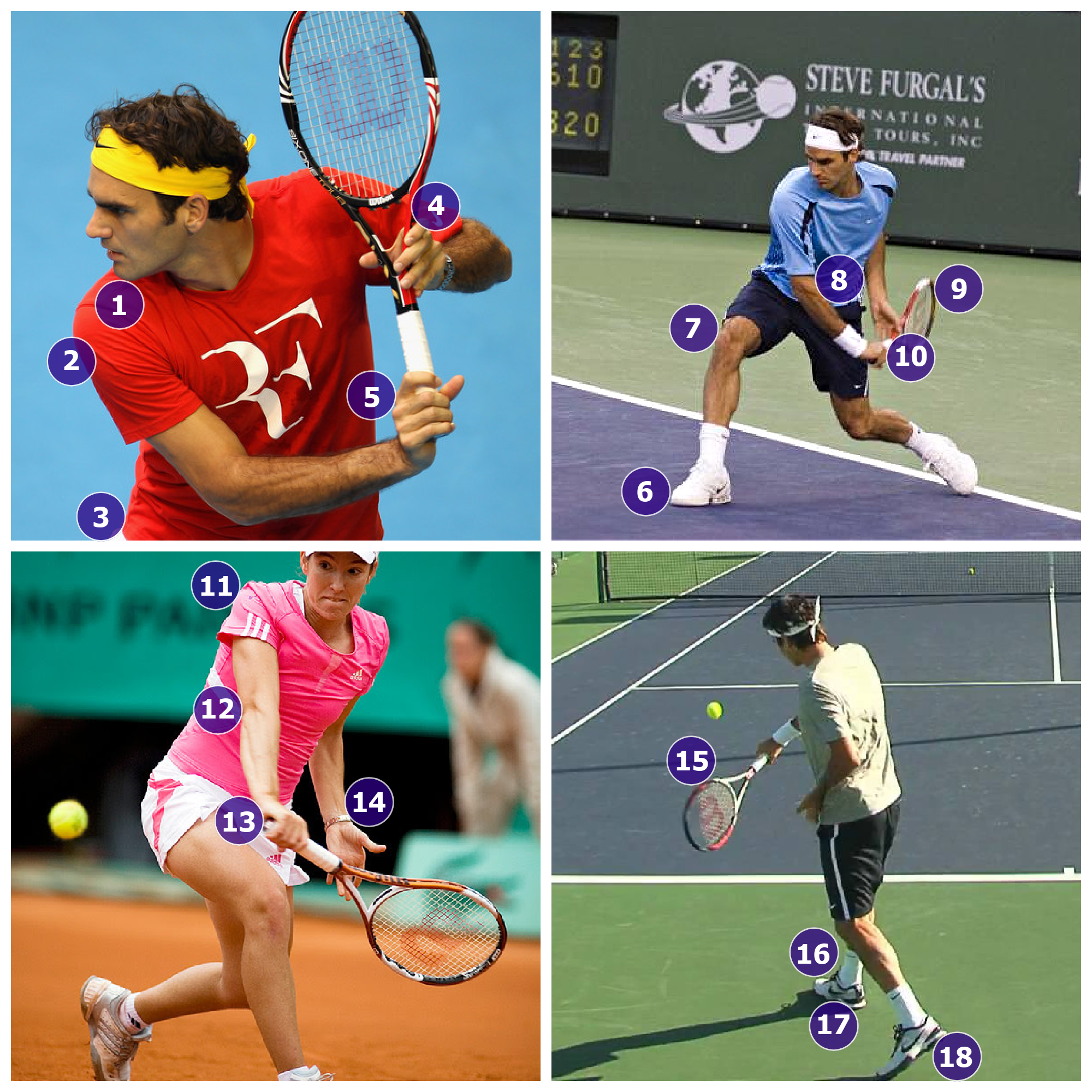
ONE HAND BACKHAND
Grip

Collapsible content
Eastern Backhand Grip
- Used for One Hand Backhand
Backswing

Collapsible content
Backswing Details...
1. Chin should be directly over the front shoulder.
2. Front shoulder is stretched out as racket goes back.
3. Hips turn legs and body sideways.
4. Left hand, with fingers spread out, holds the throat of the racket as left elbow is up, off the body.
5. Right hand and wrist are flared out during backswing.
6. Front foot steps in to ball.
7. Front knee bends to the height of the ball.
8. Arm begins to straighten as racket drops below the ball.
9. Racket head drops into the lowest point of the continuous loop.
10. Right hand remains flared out as left hand releases the throat.
11. The front shoulder is fully stretched as arm begins to swing forward.
12. Left elbow remains firm and straight throughout the backswing.
13. The butt cap should be pointing at ball as the racket swings forward.
14. Left hand remains near the back hip as the racket swings forward.
15. The racket builds to full speed prior to the contact point.
16. Weight begins shifting to the front foot before striking the ball.
17. Front foot is grounded and balanced prior to the contact point.
18. As weight shifts forward, the back foot begins to lift up, leaving the toes touching the ground.
Contact Point

Collapsible content
Contact Point Details...
19. Shoulder lifts arm and controls the shape of the swing throughout the stroke.
20. Right hip stays sideways through the contact point.
21. Arm and racket remain in "L" position throughout contact point.
22. Racket head builds to full speed through the contact point.
23. Weight fully shifts to front leg through the contact point.
24. Hips should be sideways at contact.
25. Chest should be sideways at contact.
26. Eyes stay fixed on the contact point throughout the contact point.
27. Arm remains straight throughout, with contact point a full arm's length in front of body.
28. Knuckles are up with wrist flared at contact.
29. Strings are vertical going low to high through the contact point.
30. Left shoulder remains behind body through the contact point and must remain back throughout the stroke.
31. Racket continues to rise above the contact point.
32. Right shoulder opens up after contact.
33. Head stays sideways, even after the ball comes off of the strings.
Follow Through

Collapsible content
Follow Through Details...
34. Racket head keeps rising and begins to swing to the other side of the body.
35. The core and shoulders may begin to open up, but the back shoulder must remain behind.
36. Racket and arm remain in "L" position throughout follow through.
37. Shoulder blades begin to squeeze together in follow through.
38. Hips begin to open slightly as racket swings to other side of the body.
39. Hand and wrist rotate, like turning a door knob toward the end of the follow through.
40. Head continues to stay sideways all the way through the follow through.
41. Left shoulder must stay behind body never opening up, allowing the racket to drive through the ball.
42. Shoulder is loose and naturally stretches to its furthest point.
43. Back and core are straight, balanced, and in a good posture.
44. Chest and core naturally rotate as far as possible with the front foot remaining sideways and the left shoulder stays behind body.
45. All weight finishes on the front foot with the back foot's toes touching the ground.

